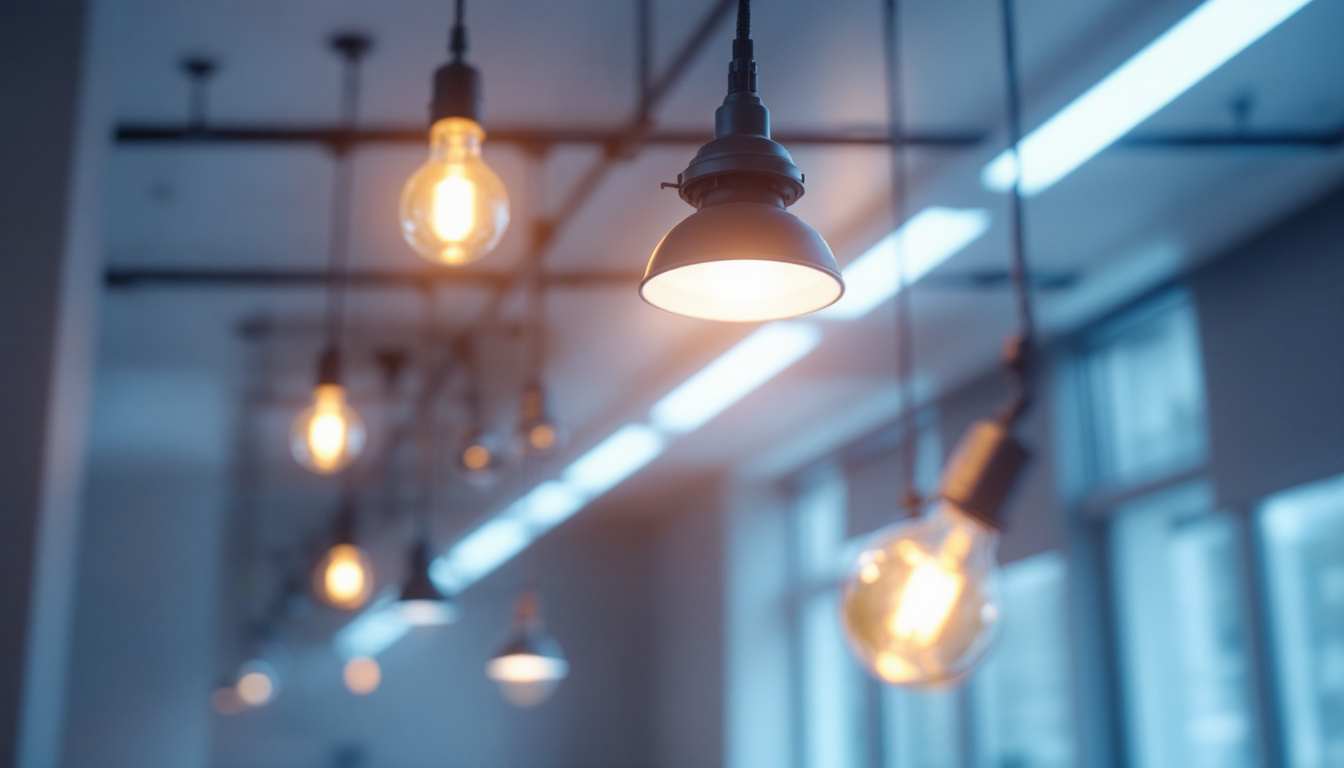
In the ever-evolving world of lighting solutions, LED technology has emerged as a game-changer. For lighting contractors, bulk purchasing of LED light bulbs can offer significant cost savings and efficiency improvements. However, there are common pitfalls that can lead to suboptimal results. This article explores these mistakes and provides insights on how to avoid them, ensuring that lighting contractors can maximize their investments and deliver the best results for their clients.
One of the most prevalent mistakes made by lighting contractors is prioritizing cost over quality. While bulk purchasing can reduce expenses, it is essential to remember that not all LED bulbs are created equal. The quality of the bulb directly affects performance, longevity, and customer satisfaction. Investing in high-quality lighting solutions not only enhances the aesthetic appeal of a space but also contributes to energy savings and reduced maintenance costs over time.
Moreover, the impact of poor-quality lighting extends beyond mere functionality. In commercial settings, inadequate lighting can affect employee productivity and morale, while in residential areas, it can influence the overall ambiance and comfort of a home. Therefore, understanding the long-term implications of lighting choices is crucial for contractors aiming to build a solid reputation and foster client loyalty.
When selecting LED bulbs for bulk purchase, contractors often overlook brand reputation. Established brands typically invest in research and development, ensuring their products meet industry standards. Lesser-known brands may cut corners to offer lower prices, leading to issues such as flickering, color inconsistency, and reduced lifespan. Additionally, reputable brands often provide warranties and customer support, which can be invaluable in resolving any issues that may arise post-installation.
Furthermore, brand loyalty can play a significant role in the decision-making process for many clients. When contractors consistently use trusted brands, they not only ensure quality but also instill confidence in their clients, who may be more likely to recommend their services based on the reliability of the products used. This relationship between brand reputation and contractor credibility cannot be underestimated in a competitive market.
Another critical aspect of quality is performance specifications. Factors such as lumen output, color temperature, and energy efficiency ratings should be carefully evaluated. Contractors should avoid the mistake of assuming that all bulbs with similar wattage will deliver the same performance. A thorough understanding of these specifications can prevent future headaches and ensure that the lighting meets the client’s expectations. For instance, a bulb with a higher lumen output may be necessary in spaces with high ceilings or large areas to achieve the desired brightness.
In addition to lumen output, color rendering index (CRI) is another vital specification that should not be overlooked. A higher CRI means that colors appear more vibrant and true to life, which is particularly important in settings like art galleries, retail stores, or even homes where aesthetics play a significant role. By taking the time to assess these performance specifications, contractors can make informed decisions that align with the specific needs of each project, ultimately leading to a more successful installation and satisfied clients.
Energy efficiency is a significant selling point for LED lighting, yet some contractors fail to fully leverage this advantage. When purchasing in bulk, it is vital to consider the long-term energy savings that high-quality LED bulbs can provide.
Many contractors overlook the importance of Energy Star ratings when selecting LED bulbs. This certification indicates that a product meets strict energy efficiency guidelines set by the Environmental Protection Agency. By choosing Energy Star-rated products, contractors can ensure that their installations will not only save energy but also appeal to environmentally conscious clients.
Contractors often focus solely on the initial purchase price, neglecting to calculate the total cost of ownership. This includes energy consumption, maintenance, and replacement costs over time. By presenting clients with a clear breakdown of these costs, contractors can justify the investment in higher-quality, energy-efficient bulbs, ultimately leading to increased customer satisfaction and loyalty.
Compatibility is a crucial factor when selecting LED bulbs, especially in retrofitting projects. Many contractors make the mistake of assuming that all LED bulbs will work seamlessly with existing fixtures and dimming systems.
Before purchasing LED bulbs in bulk, it is essential to assess the compatibility of the fixtures being used. Some fixtures may require specific types of bulbs, and using the wrong type can lead to performance issues, such as flickering or reduced brightness. A thorough evaluation of the fixtures can save contractors time and money in the long run.
Another common oversight is not considering the dimming capabilities of LED bulbs. Not all LED bulbs are compatible with dimmer switches, and using incompatible bulbs can lead to poor performance and customer dissatisfaction. Contractors should ensure that the bulbs they choose are specifically designed for use with dimmers and verify the compatibility with the existing dimming systems.
Color temperature plays a significant role in the ambiance of a space, yet many contractors fail to consult with clients about their preferences. This oversight can lead to dissatisfaction and the need for costly replacements.
Before making bulk purchases, it is crucial for contractors to engage in conversations with clients regarding their desired color temperature. Different spaces may require different lighting atmospheres; for instance, warm white light is often preferred in residential settings, while cooler temperatures may be more suitable for commercial environments. Understanding these preferences can lead to better project outcomes.
Offering clients the opportunity to see and compare different color temperatures can also help in making informed decisions. Providing samples allows clients to visualize how various options will look in their space, ultimately leading to a more satisfactory outcome.
In the fast-paced world of technology, lighting needs can evolve rapidly. Contractors often make the mistake of focusing solely on current requirements without considering future needs.
When purchasing bulk LED bulbs, it is essential to think about scalability. If a project is expected to grow or expand in the future, contractors should consider purchasing additional bulbs that match the initial order. This ensures consistency in lighting quality and performance, making it easier to manage future expansions.
Keeping abreast of emerging technologies and trends in the lighting industry is vital. New advancements can lead to improved efficiency, better performance, and enhanced features. By staying informed, contractors can make better purchasing decisions and provide clients with the latest innovations.
Effective inventory management is crucial for contractors who purchase LED bulbs in bulk. Mismanagement can lead to excess stock, wasted resources, and missed opportunities.
Contractors should consider implementing inventory tracking systems to monitor stock levels and usage rates. This can help prevent over-purchasing and ensure that the right quantities of bulbs are available when needed. Additionally, tracking inventory can provide insights into which products are most popular, guiding future purchasing decisions.
Establishing a reorder schedule based on project timelines and usage patterns can also help contractors maintain optimal inventory levels. By planning ahead, contractors can avoid last-minute rush orders that may lead to higher costs and compromised quality.
While bulk purchasing can streamline the procurement process, contractors often underestimate the challenges associated with installation. Proper planning and preparation are essential to ensure a smooth installation process.
Before purchasing LED bulbs, contractors should assess the installation requirements for each project. This includes evaluating the complexity of the installation process, the need for specialized tools, and the availability of qualified personnel. By understanding these factors, contractors can better prepare for potential challenges and avoid costly delays.
As LED technology continues to evolve, it is crucial for contractors to invest in training their staff on the latest installation techniques and best practices. This ensures that the team is equipped to handle any challenges that may arise during the installation process, leading to more efficient and successful project completions.
Finally, one of the most significant mistakes contractors make is neglecting to educate their clients about LED technology and its benefits. Proper education can enhance customer satisfaction and lead to repeat business.
Contractors should consider providing clients with informative materials that explain the advantages of LED lighting, including energy savings, longevity, and environmental benefits. This not only helps clients make informed decisions but also positions the contractor as a knowledgeable and trustworthy expert in the field.
Educating clients about proper maintenance and care for their LED lighting systems can also enhance their experience. Providing guidance on how to clean fixtures, troubleshoot common issues, and when to seek professional assistance can lead to long-lasting relationships and increased customer loyalty.
Bulk purchasing of LED light bulbs presents significant opportunities for lighting contractors, but it is essential to navigate the associated challenges carefully. By avoiding common mistakes such as prioritizing cost over quality, neglecting energy efficiency, and underestimating installation challenges, contractors can maximize their investments and deliver exceptional results for their clients.
Ultimately, success in the lighting industry hinges on a combination of informed decision-making, effective communication, and a commitment to quality. By addressing these common pitfalls, lighting contractors can enhance their reputation, build lasting client relationships, and thrive in a competitive market.
Ready to avoid the common pitfalls and set your lighting projects up for success? Choose LumenWholesale for your bulk LED light bulb needs and benefit from our commitment to quality and affordability. Our spec-grade lighting products are designed to meet the highest industry standards, ensuring you deliver exceptional results to your clients. With unbeatable wholesale prices and the convenience of free shipping, we make it easy to get the premium lighting you need at the best value. Explore our selection now and experience the LumenWholesale difference in your next lighting project.

Explore the rising significance of Keystone Ballast in the lighting industry, delving into its innovative impact on energy efficiency, sustainability, and modern lighting solutions.

Discover how lighting contractors can enhance their projects with recessed luminaires.

Discover why LED light bulb sockets are essential for lighting contractors in this insightful article.

Explore the ultimate guide to dusk to dawn flood lights with insights from top lighting contractors.